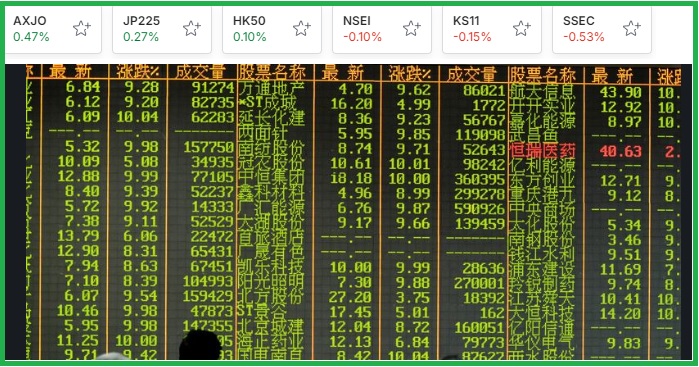
(Photo : Asian markets)
- Asian markets surge and U.S. dollar weakens as global markets anticipate the Federal Reserve's easing cycle.
- The weaker dollar impacts Japanese exporters' earnings, pulling down Tokyo's Nikkei by 2%, but Asian stocks perform well overall.
- Market expectations for a rate cut are high, affecting U.S. Treasury yields and causing the two-year yield to fall to a two-year low.
- The Bank of England and the Bank of Japan are set to discuss monetary policy, while China's economic recovery stutters.
Asian markets experienced a surge on Tuesday, while the U.S. dollar and Treasury yields faced pressure. This comes as the global financial community anticipates the Federal Reserve's easing cycle, which is expected to commence on Wednesday.
The potential for an outsized rate cut has led to increased speculation and market activity.
The anticipation of the Federal Reserve's easing cycle has led to a shift in the value of the dollar, which is now trading near its lowest level in over a year against the yen at 140.64. This is a significant development, as the strength of the dollar has a direct impact on global trade and economic stability.
Impact on Asian Markets and the Dollar
The weaker dollar has also led to concerns about the earnings of Japanese exporters, which in turn has pulled down Tokyo's Nikkei by 2%. Despite the drop in the Nikkei, Asian stocks have generally performed well amidst these conditions.
The MSCI's Asia-Pacific index rose by 0.47%, indicating a positive response from investors in the region. This is a noteworthy development, as it suggests that investors are optimistic about the potential impact of the Federal Reserve's easing cycle on the Asian markets.
Market Expectations and Treasury Yields
Market expectations for the Federal Reserve's rate cut are high, with a 67% chance of a 50-basis-point rate cut being priced in. This is influenced by recent media reports and the general sentiment in the financial community.
The anticipation of the rate cut has also affected U.S. Treasury yields, with the two-year yield falling to a two-year low. However, the benchmark 10-year yield remains little changed, reflecting the uncertainty surrounding the potential impact of the rate cut.
Global Anticipation and Economic Uncertainty
The Bank of England (BoE) and the Bank of Japan (BOJ) are also set to meet this week to discuss monetary policy. Both central banks are expected to keep rates on hold, further highlighting the global anticipation surrounding the Federal Reserve's decision. The BoE, in particular, is expected to adopt a gradualist approach in the early part of its easing cycle, keeping the bank rate unchanged at 5.0%.
In China, the country's economic recovery continues to stutter, with industrial output growth slowing to a five-month low in August. Retail sales and new home prices have also weakened, adding to the economic uncertainty in the region.
The potential for an outsized rate cut has led to increased market activity and speculation. The impact of this decision will be felt globally, affecting everything from the value of the dollar to the performance of Asian stocks. As such, all eyes will be on the Federal Reserve as it navigates this critical juncture in the global economy.









